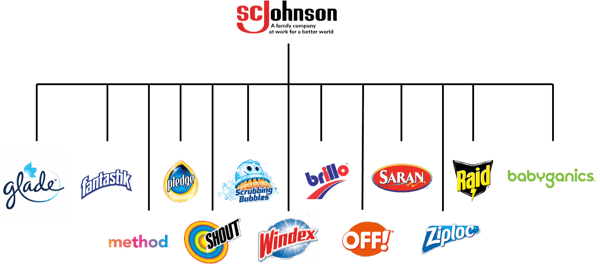5 Steps to Creating Successful Sub-Brand Guidelines
As companies grow, they typically evolve into needing sub-brands. A sub-brand is simply a division or subsidiary of an existing brand.

Most organizations operate multiple brands. Sometimes this is due to a merger or acquisition, while other times it is by design within the marketing and product R&D departments.
Regardless of how the brands came to be, creating a logical structure to organize them and determine how to utilize brand assets best is a critical aspect of brand management.
Identifying the right brand architecture for your needs will simplify your marketing, enable more effective cross-promotion opportunities, and provide a better customer experience.
The most effective brand architecture is built on a foundation of research into the awareness, preference, and experience of your customers and target audience. Regardless of your company’s size, brand architecture can enable you to:
There are three approaches to establishing brand architecture: House of Brands (family branding), Branded House (corporate branding), and Hybrid model.
A house of brands strategy, or family branding, is when a corporate or umbrella brand is combined with specific product brands.
SC Johnson Co. is an excellent example of an organization that employs a house of brands strategy.

They end every commercial the same way telling you that each product is part of a family of brands.

The parent company uses the family branding literally to communicate their overarching mission: “As a family company, we care about making life cleaner, easier and better for families. That's why we've spent over a century making quality products that work, using ingredients you can trust.”
In general, the house of brands approach works best when relatively distinct segments of users (or use occasions) exist and therefore, the common affiliation is unlikely to increase cannibalization.
Family affiliation helps to assure quality. Employing the family brand in this way can bring added power to a new product brand of an existing family brand.
However, this familiarity does not come without risk. The family brand may constrain the acceptable range of what consumers expect from you at the product level.
A branded house approach, or corporate branding, is the simplest and most straightforward brand architecture. In this framework, one brand name dominates.
Similar to purchasers of product brands, the buyers of these companies’ products may differ in the value that they seek, creating different segments.
However, in a B2B setting, it is often difficult to create unique brands without a meaningful link to the corporation – think GE, Microsoft, or Amazon.

Image brands such as Nike also find the corporate branding approach appealing. Having multiple products with a common name helps to clearly define the experience buyers can expect and enrich the total brand image.
Often companies are attracted to a branded house framework due to the efficiency that it provides; however, there’s a cost to this approach as well. When all of your products and extensions exist under one brand, the risks to your brand health are extended as equally as the benefits. All products under the corporate brand are vulnerable to the associations that the master brand evokes.
The hybrid brand architecture model is a mix of the branded house and house of brands architecture.
This model is often used when a company is in the process of growth or change – like if they often acquire new brands and add them to the portfolio.
This model helps to keep existing customers happy while avoiding confusion as new products are added to the mix.
An example of a company that employs a hybrid brand architecture is Coca-Cola.

A hybrid strategy can enable a firm to continue promoting their flagship brand, while also attracting distinct segments of consumers who may not wish to be affiliated with each other.
Additionally, if there is an overarching loyalty or rewards program – like MyCokeRewards – a hybrid strategy allows you to extend the loyalty program across brands without mass confusion.
That said, you must always approach a hybrid model knowing that the consumer will eventually learn about the parentage of brands. If your brands are separated by function, consumers are likely to understand and accept it without question. However, if the only differentiating factor is the image, you may run the risk of alienating or offending your audience.
Building a robust brand architecture requires time, research, and a commitment to collaboration between your key company stakeholders and your agency.
Taking the time to effectively manage your brand will streamline your marketing efforts and result in increased brand value both internally and externally.
At Mighty Roar, we see our clients as the product and subject-matter experts. This allows us to leverage our experience and consumer knowledge to align the brand experience, functions, and benefits with the target segments and personas. Let’s connect and discuss how we can help you build an effective brand architecture as well.
Sign up for our monthly newsletter to receive updates.

As companies grow, they typically evolve into needing sub-brands. A sub-brand is simply a division or subsidiary of an existing brand.
In a world flooded with advertisements and promotions, it's not enough to simply showcase your product or service to attract sales.Product research,...

A brand redesign can breathe new life into your business, attract new customers, and give your brand a fresh and modern look. However, it's crucial...